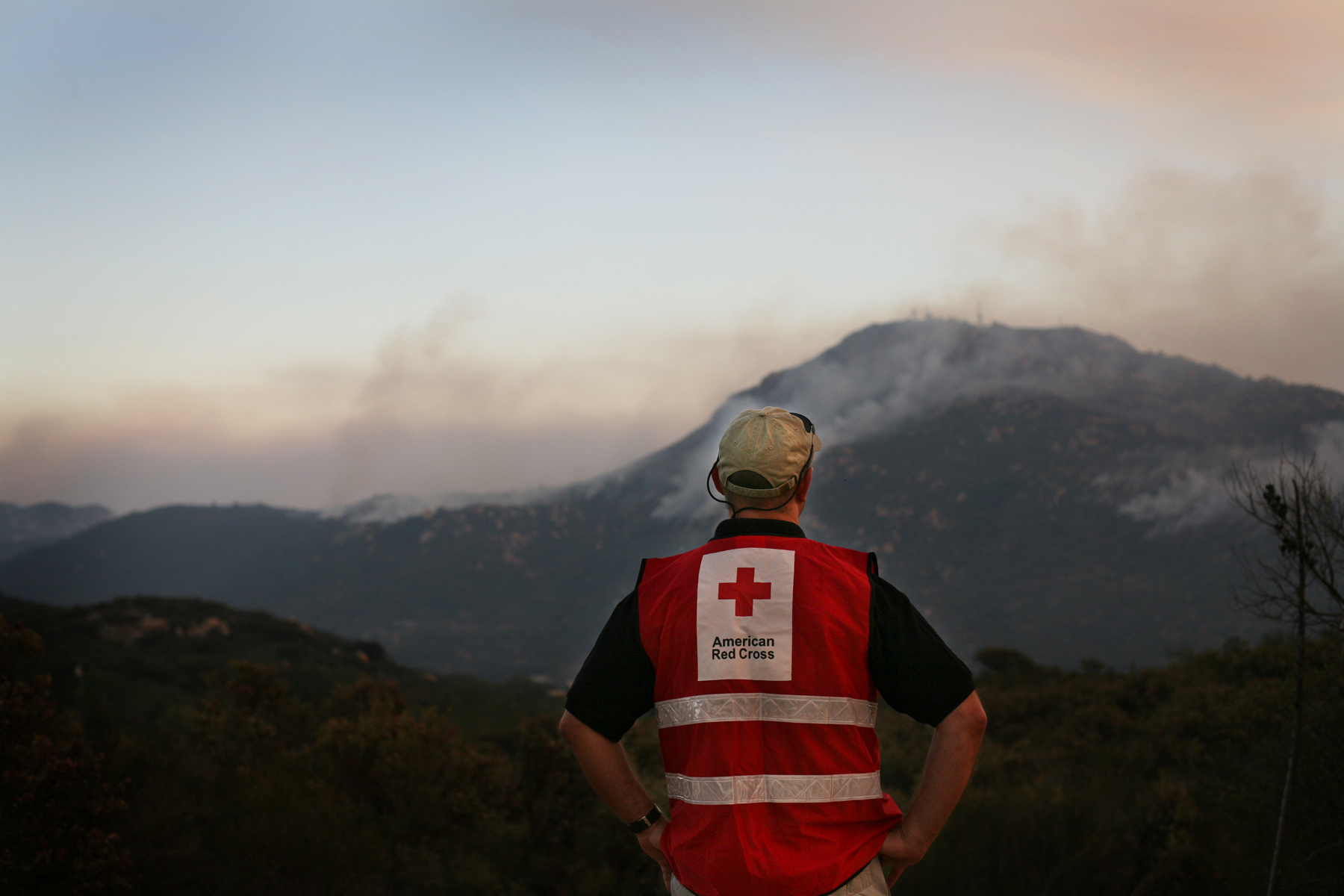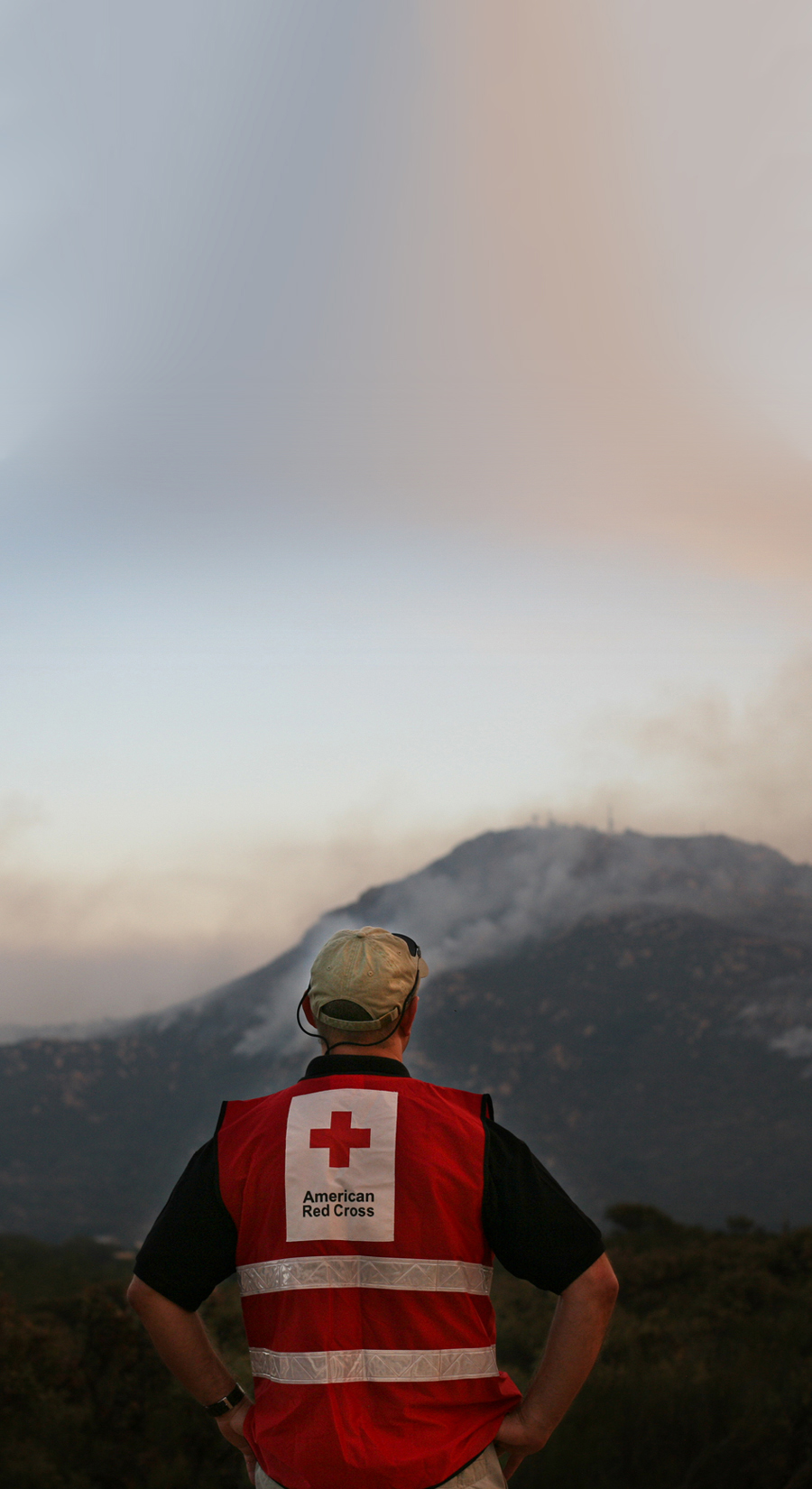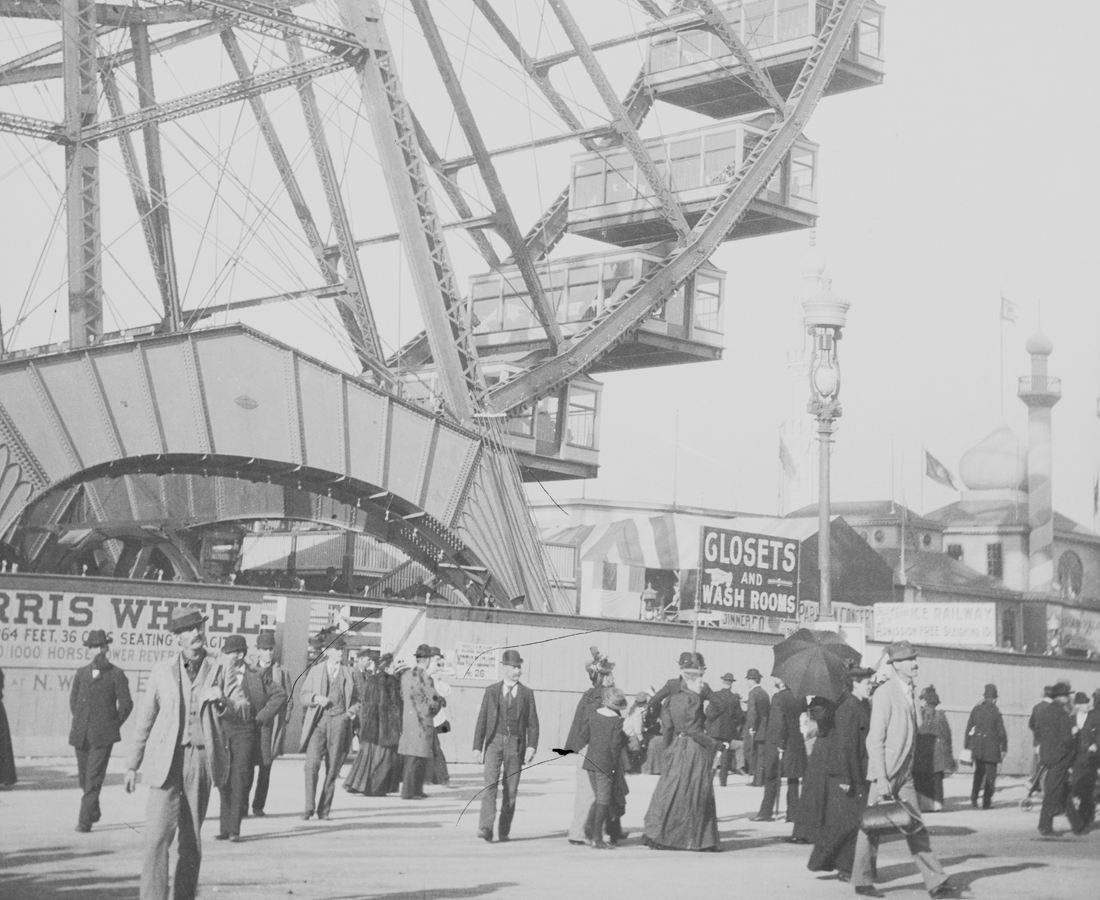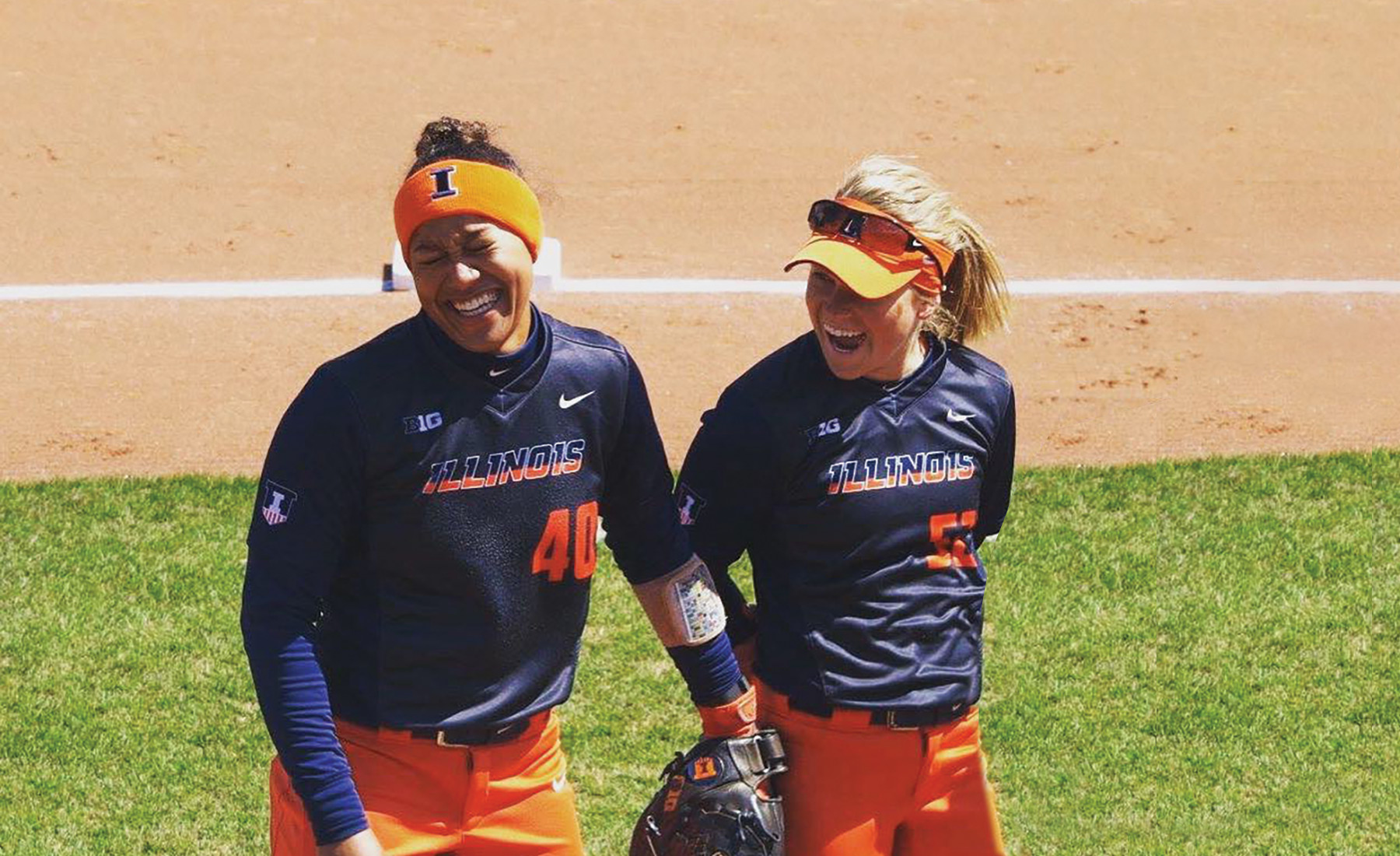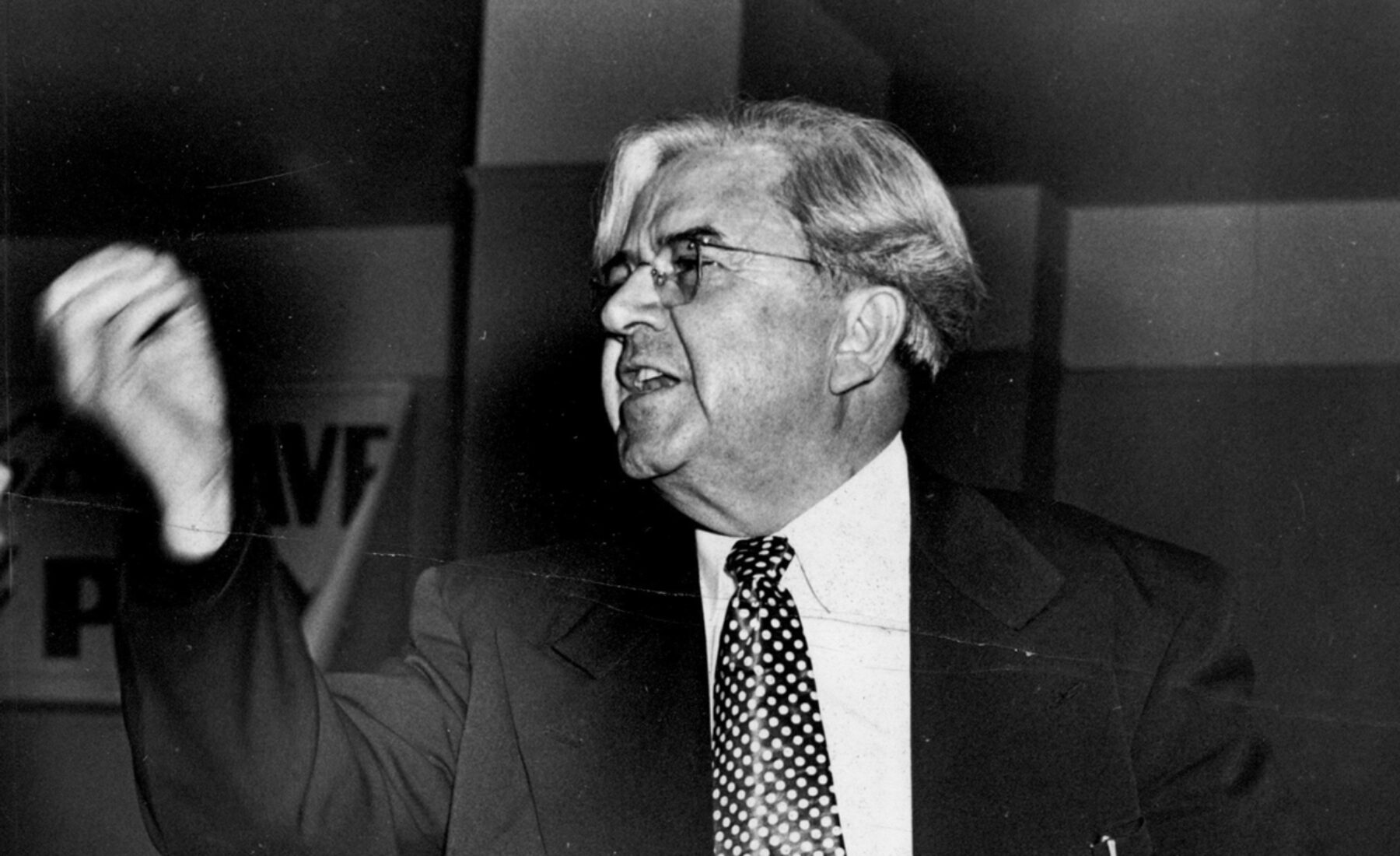By nearly any measure, 2020 has been a difficult year. On average, an Atlantic hurricane season will see twelve named storms. In 2020, there have been twenty-seven as of October 24th. This has been the most devastating wildfire season on the West Coast in seventy years—in California alone, over 4.4 million acres have burned and over 9,200 structures have been damaged or destroyed. There has been widespread civic unrest. Over eight million Americans have been infected with the coronavirus, and 220,000 have lost their lives.
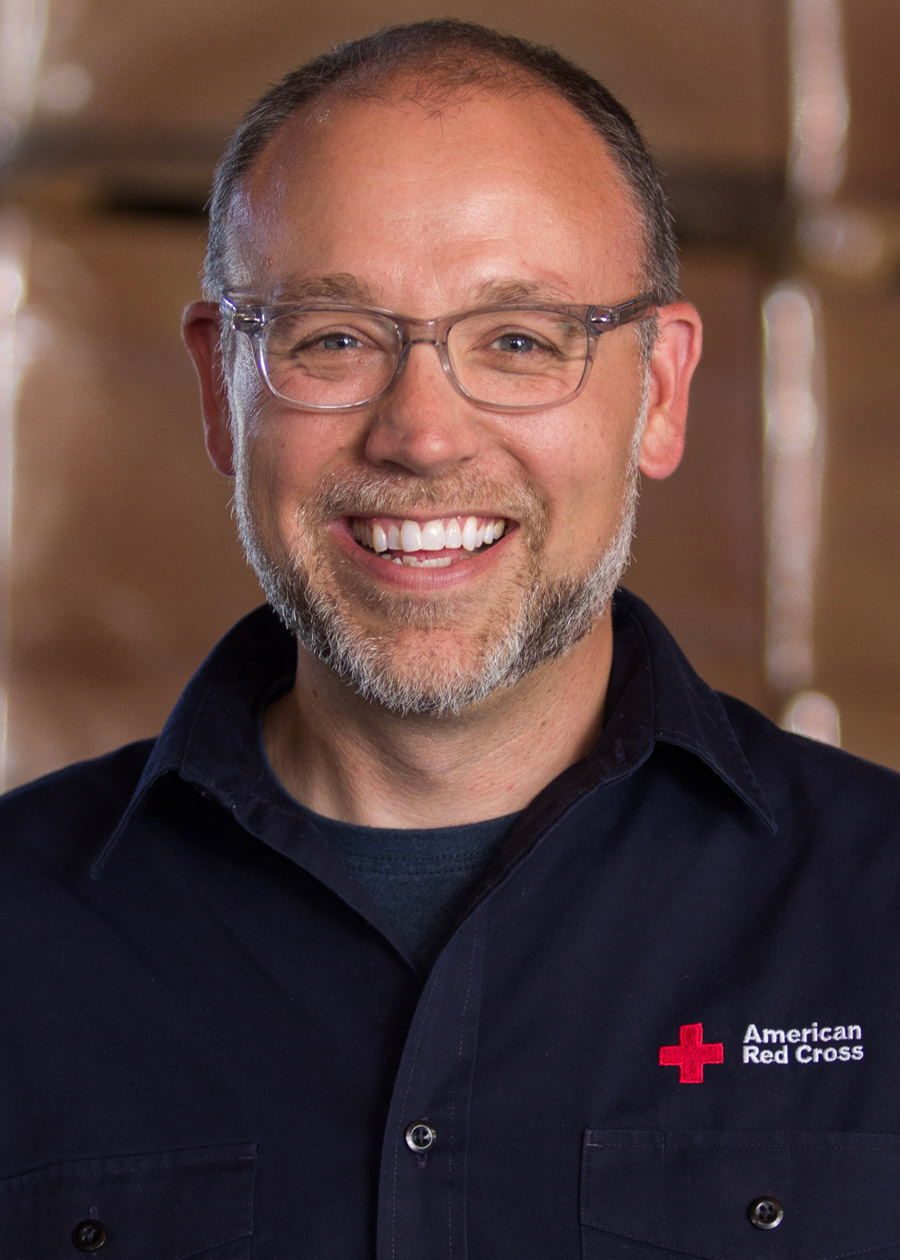
In what might feel like a helpless situation, however, goodness can be found. As Fred Rogers once said, “You have to look for the helpers.”
Trevor Riggen (LAS ’98) is one of those helpers. Riggen is the Senior Vice President for Disaster Cycle Services for the American Red Cross. He oversees all of the domestic disaster programs, in the U.S., Puerto Rico, the U.S. Virgin Islands, Guam, and American Samoa.
Riggen spoke with us from his home in Washington D.C. He took time from his extremely busy schedule to talk with STORIED, and helped us understand how the Red Cross network is answering the call for help in an intense year.
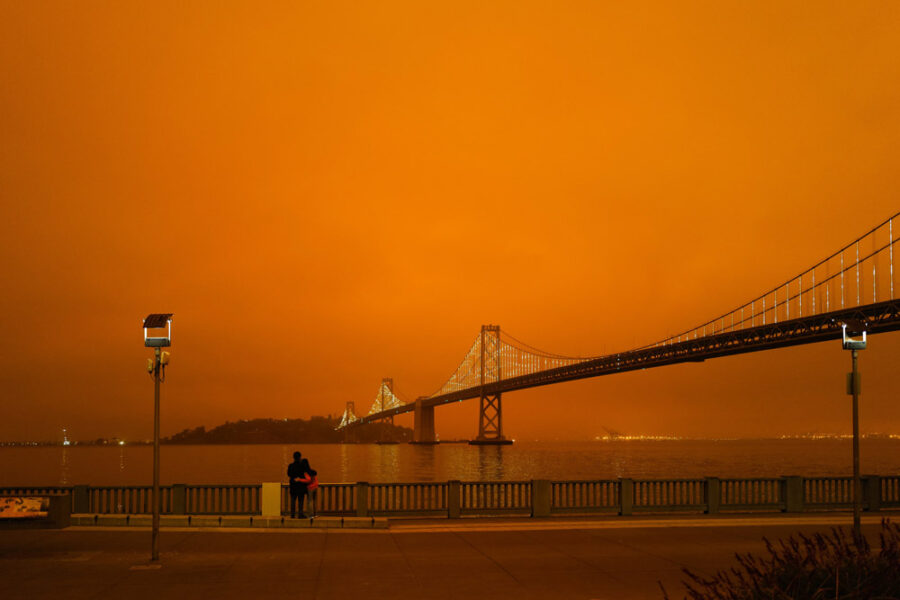
How does the Red Cross help in communities?
We focus on three main things. The first is preparedness. Our biggest preparedness program is installing free smoke alarms in homes and educating families all over the country—we’ve installed over two million and documented 794 lives saved in the last five years.
Then there is the response side, where there are two big worlds for us.
One is the day-to-day work we do in communities. We respond to about 60,000 disasters a year, all over the country. We maintain teams of volunteers who are ready 24/7 to respond when they get a call from the fire department to go to the scene of a fire, for example. That happens every single day, hundreds of times a day. Running that program is our daily work.
And then we have readiness for big disasters. That same group of volunteers are also part of our large-scale responses, whether it’s a flood or tornado or something big like Hurricane Laura or the wildfires in California and Oregon. This can include thousands of volunteers and staff; since July 1, we’ve deployed more than 7,000 volunteers and staff for large disasters.
Sadly, these really large events have become the norm. They have been more frequent in the last five years than in my previous ten years with the organization.
In addition to the increase in disasters, this year is obviously different. How are you handling the challenge of COVID in your daily work?
We had to change all of our operating procedures beginning back in March. We have personal protective equipment (PPE) for every volunteer and staff member and for the clients as well. We’re testing and implementing social distancing. When we send teams out to local fires, for example, we are dropping off an iPhone and our volunteers do video calls with the families to keep everyone safe. We are also putting people in hotels instead of opening up shelters. Last night, we had just over 20,000 people in hotels all over the country. Just in Louisiana, we still have thousands of rooms housing the survivors of Hurricanes Laura and Delta.
It’s been an interesting, additional challenge to our disaster work, for sure. And then our clients, the people we serve, their lives are harder, too. Many of them have lost income in the last six to eight months. They have that hardship going on, and now they’ve lost their home. Everything’s just a little bit harder. It has changed so many parts of how we operate, but we’re still serving—just in a different way.
You mentioned the increase in the frequency of large-scale disasters. What has the Red Cross done to adapt?
Since July 1, we’ve recruited over 5,000 new volunteers, just to help with this round of disasters. We’ve also become more streamlined in our operations, so we can free up the people in the communities to do more service delivery. We’ve also added a bunch of virtual tools to help with scale. Typically, two or three years ago, if you needed financial assistance we would hand you a preloaded debit card. Now we have virtual options. We can use PayPal, MasterCard, Zelle, you can even pick up cash at Walmart—and you can do that all by text. That helps us conserve our workforce.
Internally, over the last five years we’ve built some pretty high-tech technology for tracking our resources so we can make decisions. I can pull up a system anytime of the day and see exactly how many people we’re serving and what our teams are doing. I can then overlay the need on that map. We’ve invested a lot in being able to stay coordinated, and that’s a huge leap forward from ten years ago. We have a large program team at our headquarters that builds all these solutions. And then we have our operational team that concentrates on our service. I get to be a part of both of those teams and help make sure our efforts are aligned.
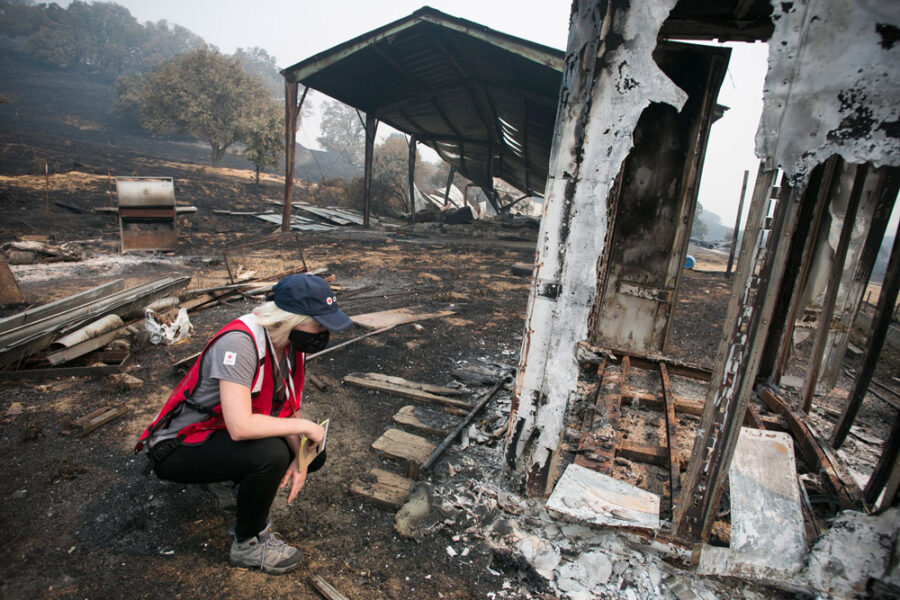
What is it like when you’re actually out in the field?
It’s hard. I get asked this question a lot. How do you deal with all the pain you see? The imagery, unfortunately, you do get used to. You walk into a town where there’s nothing but slabs of concrete because the homes are completely gone. Or in the West, you see melted pools of aluminum, and that’s all that’s left of the car, the rims melted into a puddle.
What I will never get used to are the painful stories that families tell you.
When I am in the field, I will spend time in shelters talking to families, trying to understand what they went through. And so that part, I hope I never get numb to, because that’s why I do what I do. I try to understand what’s different in this disaster versus the last twenty, because they are all very unique.
I also spend a lot of time with our partners and our government leaders to make sure the Red Cross is doing what we need to do. We’re not funded by government. All this work is driven by donations, so I spent time with donors and make sure they get good updates on the work and make sure that they know how many people we’re helping.
When I’m in the field, I spend a lot of time with people. It’s not sitting in a conference room, drafting up spreadsheets. I’m sitting down with people—both clients and volunteers—making sure we understand what our clients need and helping our volunteers understand how much we appreciate their time. I look at a volunteer’s time just like I would a million-dollar gift.
It’s a gift, right? And even now with COVID, I have volunteers who are willing to really put their lives somewhat at risk to travel, to be out in the community, to be in an uncontrolled environment. That’s a lot to ask.
And you’ve actually increased your number of volunteers, not decreased.
We have and it’s amazing. We were a little worried back in March and April that volunteers would be scared to go out and we’d see this huge drop off. But we just haven’t seen that. People are still willing to serve. We’re protecting ourselves, and taking very, very strict measures. It is really amazing. It’s just another new challenge that they rise up to.
It is so impressive. It is emotional work, and yet the volunteers are so altruistic and so giving.
Yeah, you’d be amazed at how many volunteers go out over and over again. I saw a note from a volunteer yesterday who just got home from Louisiana after serving three weeks there. She said she’s going to take ten days off, and then she’s going to go to California. There are just thousands and thousands of people like her who go out there and make volunteering their life.
The Red Cross organization is based on seven principles created more than 150 years ago and voluntary service is one of them. We don’t need volunteers because it’s cheaper, or because we need a lot of them. It’s because they do it for a different reason. They serve for no other reason than to help someone. They’re not concerned about where that person came from, or why they’re here, or why this disaster happened. They’re just looking at the person in front of them and saying, “Let me help you. I know how to give help. Let me make that happen.”
What do you think is the most challenging part of your work?
I think it’s adapting to the increased needs of the people we serve. We can serve hundreds of thousands of meals a day. We can shelter 100,000 people. We can do all these amazing things, but the needs of an individual person are getting more and more complex.
We try to serve thousands of people at once, but how do we make sure we don’t lose track of the needs of individuals? And so that, to me, is the challenge that’s keeping me up at night. We make sure we’re paying attention to the little details so we can understand the real needs of a vulnerable person who may slip into homelessness or poverty or end up in long-term care and never come out. Giving a little bit of help to that person could keep them on a much better path for years and years.
Let’s talk about how you work with other agencies. How do you coordinate with one another when so many different groups come together in one disaster response?
It starts very, very local. Local governments, usually at the county level, have something called an emergency operation center, or EOC. The Red Cross has a seat in that room in every county in the country. We send volunteers and staff in to be there with our government partners to make sure we’re aligned and not duplicating work, and so we can identify any gaps.
One of the things we talk to our volunteers about is making sure we take the time to talk to people. It’s not just about handing things out or serving things, it’s about spending time to understand what folks are going through. We spend a lot of time in our shelters going cot to cot, just asking questions about what they are going through and what they might need.
Most people, they’re not going to ask for help, they’re going to assume somebody else needs it more than them. So they say, well, I’ll just tough it out, I’ll be fine. And they’re sitting there suffering, not knowing that we actually could give them new eyeglasses or fill their prescription or give them a new wheelchair or call their sister in another state and help them get a plane ticket to go stay with her. We can do all sorts of things, but you have to have conversations to understand what the clients need.
How have the last five years informed your conversations about preparedness? Do you work closely with scientists as well as community leaders to think about evolving those plans?
We do, and we do this especially through the International Federation of the Red Cross based in Geneva. Every country has its own Red Cross. We all follow the same principles, but we’re all a little different and we lean on each other for insight. There is a climate change center in in the Netherlands that is part of the Red Cross. We also have a global disaster preparedness center, that serves all Red Cross societies with new technology and new tools. So, we lean on each other for insight on how to better understand the impact of disasters and how to build resilience.
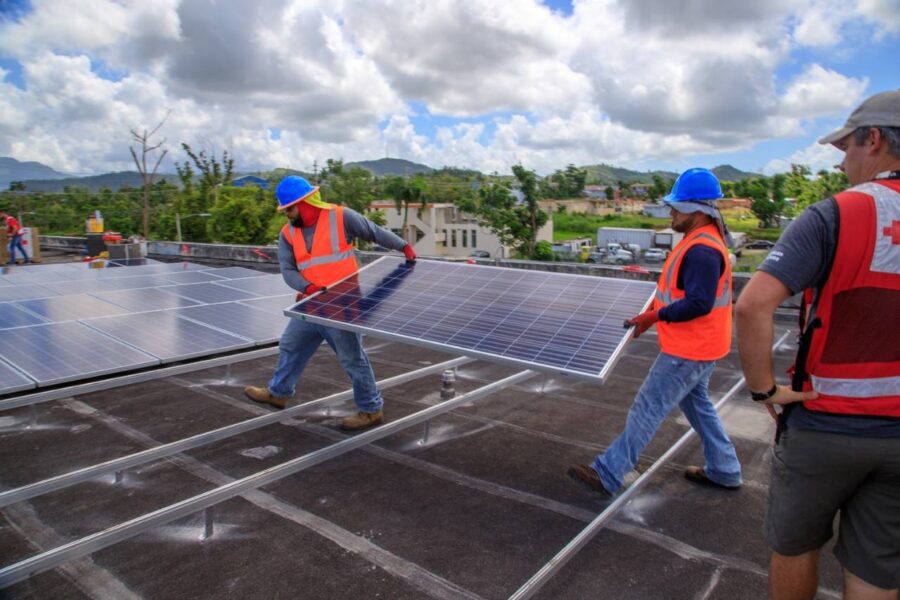
Climate change is definitely driving increased disaster risk all over the world, especially here in the U.S. We’re seeing it now in the last decade faster than I think anybody expected. For us, the real challenge is the increased impact on people and the need for us to be bigger and faster.
I think years ago, we would have said, well, let’s get this family back into a house. Hopefully, they’ll never have a tornado again. Now, we see that it’s the same family getting hit over and over again. If you go down to Southwest Louisiana right now, there are families who have lost their home four times in the last twenty years. There are families in California right now that have been evacuated a dozen times in the last three years. So, when we think about rebuilding, we think about rebuilding knowing that they’re going to have increased risk.
A good example is Hurricane Maria in Puerto Rico. Instead of just doing our standard program, we actually invested in solar technology. We put solar micro grids on the tops of 150 schools all over the island, so that they could be used as shelters during a hurricane, and the power would stay on even in a category five hurricane. That means there will be water, there will be power, and they will be safe. We’ve tried to really start to innovate around risk for the next disaster.
How do you answer when people say, “Well, why don’t they just move out of these places that have been hit multiple times?”
It’s very easy to say, but really hard to do. If you’re already living on the edge, living paycheck to paycheck or even behind, you’ve likely got some network of friends and family and organizations that help keep you afloat. If you pick up and move to a totally different place, now you’re an outsider. And now you have to recreate that safety net. For a lot of people, that is just way too much risk. Can you take the risk that you may not be able to find all the food you need next month in a new town?
Sometimes you have to face the risks that are immediately in front of you, which is feeding your family and keeping your family safe. And as dangerous as these disasters are, you aren’t thinking about them every morning when you get up. That’s where we come in, knowing that people don’t always have the resources to just move.
Tell me a little bit about what you have personally learned from doing this kind of work.
Great human suffering in this country seemed like something we only saw once in a while, and when we did, we would all rally around it. What’s changed, and what drives me now, is that this degree of suffering seems to have become the normal. We are just numb to large-scale human suffering in our country every day.
But the other part, which we’re probably not always aware of, is how much good is happening through those thousands of humanitarians that volunteer their time—people who are willing to get up at two in the morning and go help somebody who has lost everything. There is a lot of division right now, a lot of tragedy. But I also get to see a lot of goodness, too. You can be inspired by it every single day.
And then on top of that, I get to play a small role in making sure people get help when they need it. Every time I’ve thought about any other line of work, I can’t imagine getting that same fulfillment anyplace else.
This story was published .